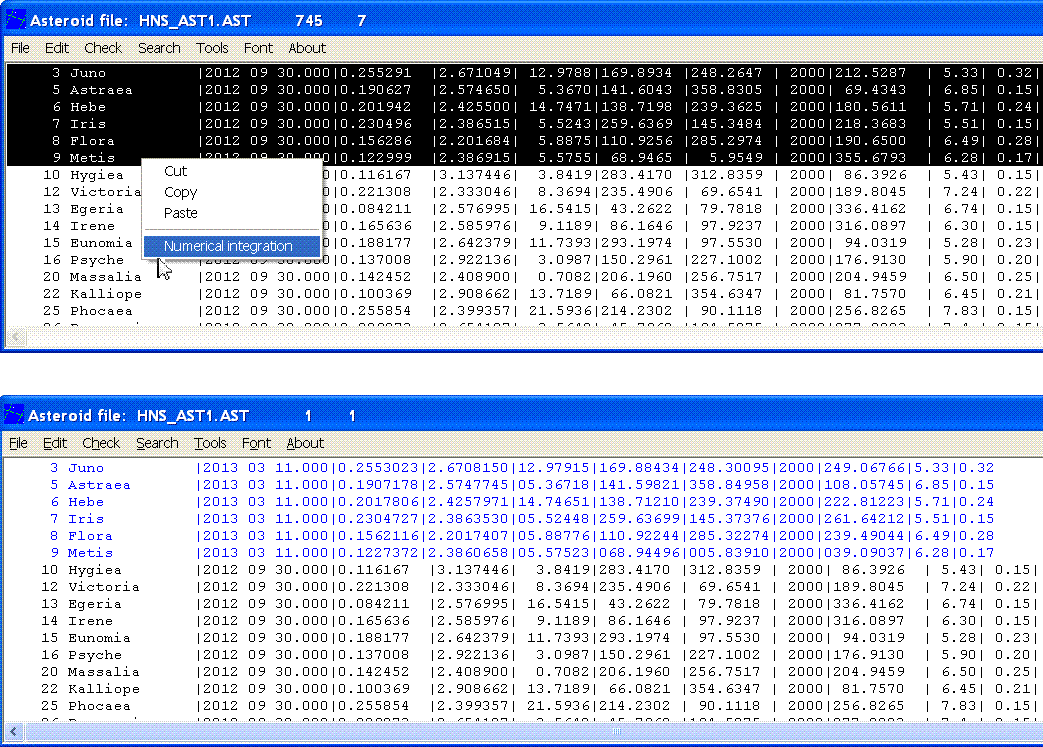Numerical integration in the HNSKY planetarium program.
HNSKY has an unique feature. On request it can do accurate numerical integration for asteroids/minor planets:
Background
Without perturbations, the orbit of a asteroid or minor planet around the Sun would follow an elliptical path around the Sun according Keplar. Such an orbit can be accurately defined by the six orbital elements: semi-major axis, eccentricity, inclination, longitude of the ascending node, argument (longitude) of the perihelion and the mean anomaly.
Gravitational perturbations by the major planets continuously distort the ideal orbit and therefore change the orbital elements. After few months perturbations can be up to 20 arc seconds in the position.
The masses and locations of the perturbating major planets are known, therefore the asteroid's change in speed and position can be accurately calculated by the numerical integration of acceleration/de-acceleration forces by the major planets. For any other epoch and therefore new position and speed, a corresponding set of orbital elements can be determinated using the undisturbed kepler equations. HNSKY compensates for the influence of Mercury, Venus, Earth, Mars, Jupiter, Saturn, Uranus and Neptune.
Functionality:
Select in the HNSKY editor a number of asteroids/minor planets and with right mouse button menu select "Numerical integration". Orbital element for the current epoch in HNSKY will be calculated. Save to make permanent. Accuracy will be better then 1" over at least 10 year time span. So in principle no download or update for orbital elements for the next 10 years required!

Code according "Astronomy on personal computer" 3th Pascal edition by Montenbruck & Pfleger with improvements in major planet position calculations.